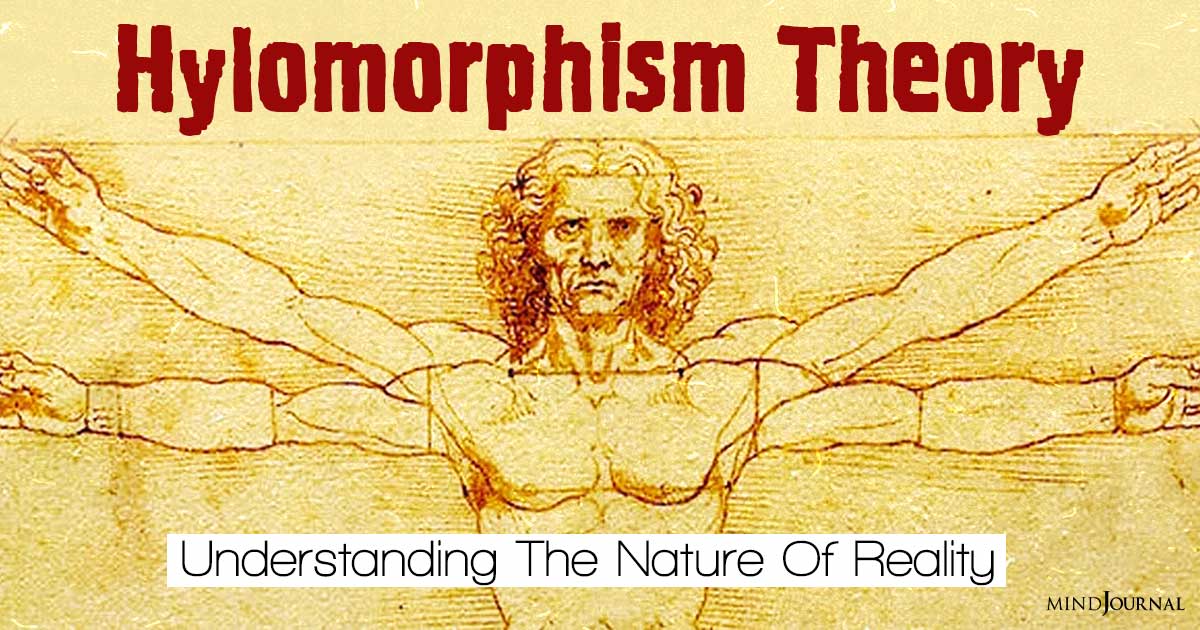Are you curious about the relationship between matter and form? Have you heard of hylomorphism theory? Let’s explore the concept of hylomorphism philosophy, its relevance in modern-day philosophy, and its applications in various fields of study.
What is hylomorphism in philosophy?
Hylomorphism definition: Hylomorphism is a philosophical concept which proposes that all objects in the world are composed of two things: matter and form. In hylomorphism, matter and form are interdependent and cannot exist independently.
According to hylomorphism meaning, matter and form are not two separate entities, but rather two aspects of the same thing. The term hylomorphism comes from the Greek words “hyle” meaning matter and “morph” meaning form.
The concept of hylomorphism has its roots in ancient Greek philosophy, with the ideas of philosophers such as Plato and Aristotle. However, for hylomorphism Aristotle is often credited with the development of the concept, as he was the one who first developed the theory in a systematic way and applied it to a wide range of objects in the world.
However, to better understand what is hylomorphism in philosophy, we need to dive deeper and explore the basics of hylomorphism meaning.
Related: Philosophy 101: 10 Philosophical Concepts To Help You Navigate Life’s Complexities
The basics of hylomorphism theory
Hylomorphism is a philosophical concept that has been debated and discussed for centuries. It is a theory that seeks to explain the relationship between matter and form, and how they work together to create the world around us.
According to hylomorphism, all objects in the world are composed of two things: matter and form. Matter refers to the physical substance of an object, while form refers to the structure or arrangement of that matter.
For example, a statue is made of marble (matter) and has a particular shape or form (form). This is an excellent hylomorphism example. A tree is another hylomorphism example. Its matter is the cells, and the form is the structure of roots, trunk, branches, and leaves.
In hylomorphism, matter and form cannot exist independently. They are mutually dependent on each other. Matter without form is formless, and form without matter is non-existent.

The role of the prime mover
One of the key aspects of hylomorphism theory is the concept of the prime mover. The prime mover is the force that brings matter and form together. It is the driving force behind all change and motion in the universe.
According to Aristotle, the prime mover is an eternal and unchanging entity that exists outside of the physical realm.
The prime mover is responsible for initiating change in the universe. It sets objects in motion and gives them their purpose. For example, a tree grows towards the sun because of the prime mover’s influence. The prime mover is also responsible for the natural laws that govern the universe.
The relevance of hylomorphism theory today
Understanding hylomorphism definition and the basics of hylomorphism philosophy of mind is not enough, we must also explore its relevance in modern age.
Hylomorphism has been a topic of debate and discussion for centuries, but its relevance in modern-day philosophy cannot be overlooked. The theory provides a framework for understanding the relationship between matter and form and how they work together to create the world around us.
It also highlights the importance of the prime mover and its role in initiating change and motion in the universe.
Hylomorphism has also influenced other areas of study, such as biology and psychology. In biology, the theory has been used to explain the relationship between the physical body and the mind.
According to hylomorphism, the mind and body are not separate entities but rather two aspects of the same thing.
In psychology, hylomorphism has been used to explain the relationship between nature and nurture. The theory suggests that both nature (genetics) and nurture (environmental factors) are important in shaping an individual’s behavior and personality.
Related: 7 Approaches To Finding The Truth
Arguments against hylomorphism theory
One of the key debates surrounding the hylomorphism philosophy of mind is whether or not it is still relevant in modern-day philosophy.
Some argue that the theory is outdated and has been superseded by more recent philosophical ideas, while others argue that the theory still holds relevance and can be applied to modern-day thinking.
One of the arguments against hylomorphism is that it is too simplistic and does not take into account the complexities of modern science.
For example, modern physics has shown that matter can be converted into energy and vice versa, which challenges the idea that matter and form are two separate entities.
Similarly, modern biology has shown that living organisms are highly complex and cannot simply be reduced to matter and form.
Despite these arguments, many philosophers still see value in hylomorphism. One of the key benefits of the theory is that it provides a framework for understanding the relationship between matter and form, which is still relevant in modern-day thinking.
The theory also highlights the importance of the prime mover, which can be seen as a metaphor for the underlying forces that govern the universe.
In addition, hylomorphism has been used to explore a wide range of philosophical questions, such as the nature of consciousness, the relationship between mind and body, and the role of free will in human behavior.
These questions continue to be relevant in modern-day philosophy, and hylomorphism theory provides a valuable starting point for exploring them.
While hylomorphism may not be the final word on the relationship between matter and form, it remains a valuable philosophical concept that continues to shape our understanding of the world around us.
Whether or not the theory will continue to hold relevance in the future remains to be seen, but for now, it remains a topic of debate and discussion among philosophers and scholars.
Takeaway
Hylomorphism theory is a complex philosophical concept that has been debated and discussed for centuries. The theory highlights the relationship between matter and form and the importance of the prime mover and its role in initiating change and motion in the universe.
While hylomorphism may seem outdated to some, its relevance in modern-day philosophy cannot be overlooked. The theory has influenced other areas of study, such as biology and psychology, and continues to shape our understanding of the world around us.
Related: What Is The Point Of Life? The Answer Is Not What You May Think It Is










Leave a Reply